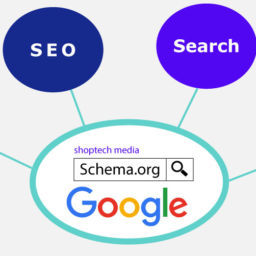A critic reviews structured data is an evaluation of a publisher’s strengths, weaknesses and reliability. It is used to inform readers of a publisher’s value through explanation, interpretation and analysis.
The critic or reviewer presents information that will allow the reader to make a value judgment about the business, book, movies, etc. Critic reviews appear in search results with a snippet from the critic, the critic’s name and the publisher icon. It helps your readers to easily find the reviews and navigate to your website to read the complete reviews.
Critic reviews structured data is specific to the following schema content types:
- Local businesses
- Movies
- Books
So, if your ecommerce is about movies and selling books. You should definitely implement critic reviews structured data.
Suppose my website is about Business Listing and/or I am selling books and movies on my site, how do I implement Critic Review structured data?
The first thing to understand is that, critic reviews are embeded inside LocalBusiness schema type. This is useful for websites that provide booking services for many businesses or for business listing aggregators. Below is an example of an embedded review of a business in JSON-LD format:
Here is the guidelines as to what content should be included in the critic reviews structured data:
-
Reviews must be created by authoritative human editor(s) , curated, or compiled content for critic reviews.
-
It must not be too long. The snippet cannot exceed 200 characters.
-
The snippet must clearly indicate an opinion about the review subject. It should not merely define the subject (for example, “”Gravity” is a film by Alfonso Cuarón”) or a plot synopsis (for example, “Dr. Ryan Stone is an engineer on her first space mission”).
-
Critic reviews cannot be template sentences built from data or automated metrics. It must be unique. Don’t include critic reviews that are duplicated or similar across many businesses.
-
No syndication of reviews. Only include critic reviews that have been directly produced by your site, not reviews from third-party sites or syndicated reviews.
-
Use non-smart double quotation marks (“) to denote titles (for example, “”Gravity” is the best movie.”)
-
Reviews must make sense to the overall context of the content. The snippet must make sense on its own and should not be confusing to someone who isn’t reading the whole article.
-
It must lend meaning on its own but not apart from the whole content. The snippet must be an exact excerpt from the long-form body of the review.
-
It should not be the review headline, a question or a teaser.
-
The snippet must be complete (not cut off, truncated, or ending in ellipses) and well-formed (having correct punctuation and grammar) thought.
-
Critic Reviews must not contain any profanity and vulgar language. Reviews should be appropriate for a broad and diverse audience. Consequently, reviews containing vulgar or profane language may be ineligible for use.
-
Don’t add critic review structured data for adult-related products or services.
-
If the critic review is for a local business, you must follow these additional guidelines:
-
Snippets must not be written by the business or content provider, and may not be provided by the business or content provider unless they are genuine, independent, and unpaid editorial reviews.
-
Critic reviews must allow for customers to express both positive and negative sentiments. They may not be vetted by the business or restricted by the content provider based on the positive or negative sentiment of the review before submission to Google.
-
Critic reviews for multiple-location businesses such as retail chains or franchises can only be submitted for the specific business location for which they were written. In other words, critic reviews for multiple-location businesses can’t be syndicated or applied to all business locations of the same company.
-
There can’t be any commercial agreements (paid or otherwise) to provide critic reviews between the content provider and the reviewed business.
-
Source.
My observation about this guideline from google developers.
Ok! That was long. What does this all mean for exactly for ecommerce websites that sells Books or bookings? I will try to explain it further in simple terms.
Firstly, Google may display information from aggregate ratings
markup in the Google Knowledge Cards. The following guidelines apply to review snippets in knowledge cards for local businesses.
Secondly, ratings must be sourced directly from users.
Rating and content should be original and directly from customers of that business. That’s what Feedback flow is all about.

Third. Do not rate your own website.
We do allow a business to remove feedback that does not meet their Terms of Service. And we allow businesses to try to satisfy complaints before posting feedback. But we do not allow self reviews.
Fourth. Websites must collect ratings information directly from users
and not from other sites. Do not mark up reviews from sites like Google or Yelp. It’s OK to have them on your site if it is OK, just not to mark them up.
Fifth. An aggregate evaluation of an item by many people
should be marked up as a schema.org/AggregateRating. Google may display aggregate ratings as rich snippets or, for certain types of items, answers in search results. Our Badge and Testimonial Widgets use AggregateRating schema in this way.
Sixth. Refer clearly to a specific product or service.
Do this by nesting the review or ratings within the markup of another schema.org type—such as schema.org/Book or schema.org/LocalBusiness —or by using that schema.org typed element as a value for the itemReviewed property.
Seventh. Make sure the reviews and ratings you mark up are readily available
to users from the marked-up page. It should be immediately obvious to users that the page has review or ratings content. Don’t hide content that has been marked up in schema from the reader. If you are using rich snippet encoding on your site the ratings content should be readily visible to the reader. It’s possible, when using JSON markup to to not display the content of the JSON mark up to the reader. That’s a no no. We clearly show all ratings and when appropriate link to the feedback content itself.
Eight. No adult-related products or services.
OK. I don’t think we have adult toy sites using the system but…
Ninth. Single reviewer name needs to be valid.
For example, “50% off until Saturday” is not a valid name for a reviewer. We use actual first name and last initial. And track the last name privately in our system. All names are valid and your actual customers. What other review system can you say that about?
Tenth. Ratings that don’t use a 5-point scale:
By default, Google assumes that your site uses a 5-point scale, where 5 is the best possible rating and 1 is the worst, but you can use any other scale. If you do, you can mark up the best and worst ratings, and Google will scale that to the 5-star system used in rich snippets.
How to implement critic reviews structured data?
Below is a screenshot of HTML code with Critic Review structured data necessary for Google to display your website in a rich tech format:

The above html code will look on the browser like this:

Whew! Alright!! So, that’s it! That is critic reviews structured data. It is not the most exciting one to create content with, but i tried my best to give it a non-technical explanation.
Check out how structured data can be implemented with your downloadable contents.
Hope you understand it better. Let me know what you think in the comment section.










